As an architect, Mohamad Abdallah always looking for ways to stay up-to-date with new and emerging technologies that can enhance work, improve the design process, and inform design decisions. He graduated from Beirut Arab University as Architectural Engineer. According to Mohammad, “Inspired by the TV show art attack I developed interests in art and design since I was young where I enjoyed making life and observational drawings, especially for buildings, from then on I begin an exploration into the field of architecture and design. Till now I never stop learning and questioning how art, design, and architecture help to improve our lives .”
Mohamad explained his vision of design and AI to PA. Let’s take a look!
Architect vision and AI
In an architect’s vision of a world where architecture and design intersect with nature using biomimicry and AI intervention in text-to-image generation, according to Mohamad, we might see buildings and other structures that are designed to mimic the function, form, and structure of natural systems. These structures might use materials and construction techniques that are inspired by nature and might incorporate elements such as natural ventilation, passive heating and cooling, and natural light in order to reduce their energy consumption and environmental impact.
The use of AI in text-to-image generation could allow architects and designers to quickly and easily generate realistic visualizations of their designs, using text descriptions as input. This could help to streamline the design process and allow architects to explore and refine their ideas.
This vision of a world where architecture and design intersect with nature using biomimicry and AI intervention in text-to-image generation would likely result in more sustainable, efficient, and harmonious built environments that are more in tune with the natural world and that provide a healthier and more enjoyable experience for people.
Text-to-image process
To use text-to-image prompts for organic design biomimicry-inspired architecture, Mohamad focuses on describing the desired design in terms of natural elements and patterns. This will help the AI platform understand the desired organic and biomimetic characteristics of the architecture design more accurately and generate a more realistic and accurate image.
For example, instead of simply saying “create an image of a building,” a user might input text such as “create an image of a curved, organic-shaped building inspired by the structure of a bird’s nest, with a living wall”. This added level of detail will help the AI understand the desired organic and biomimetic features of the architecture design and generate an image that aligns with these criteria.
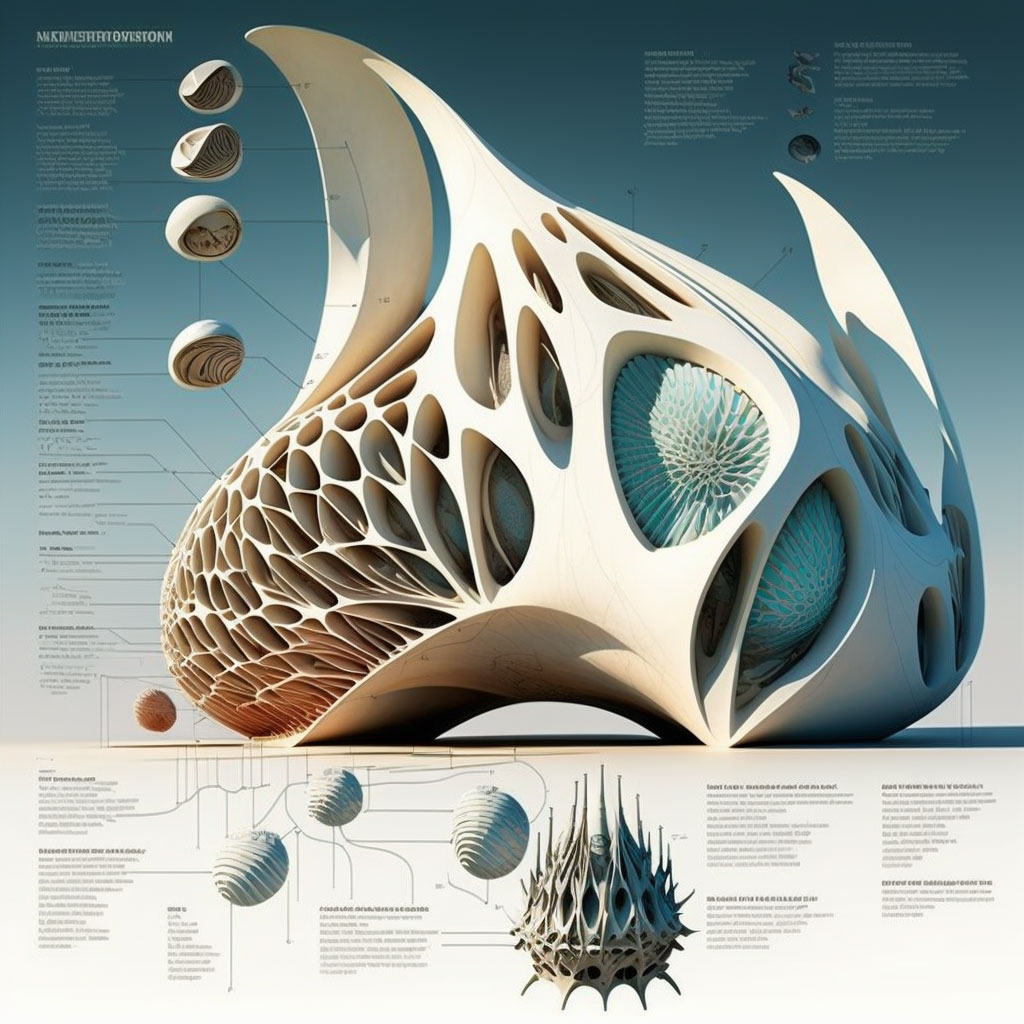

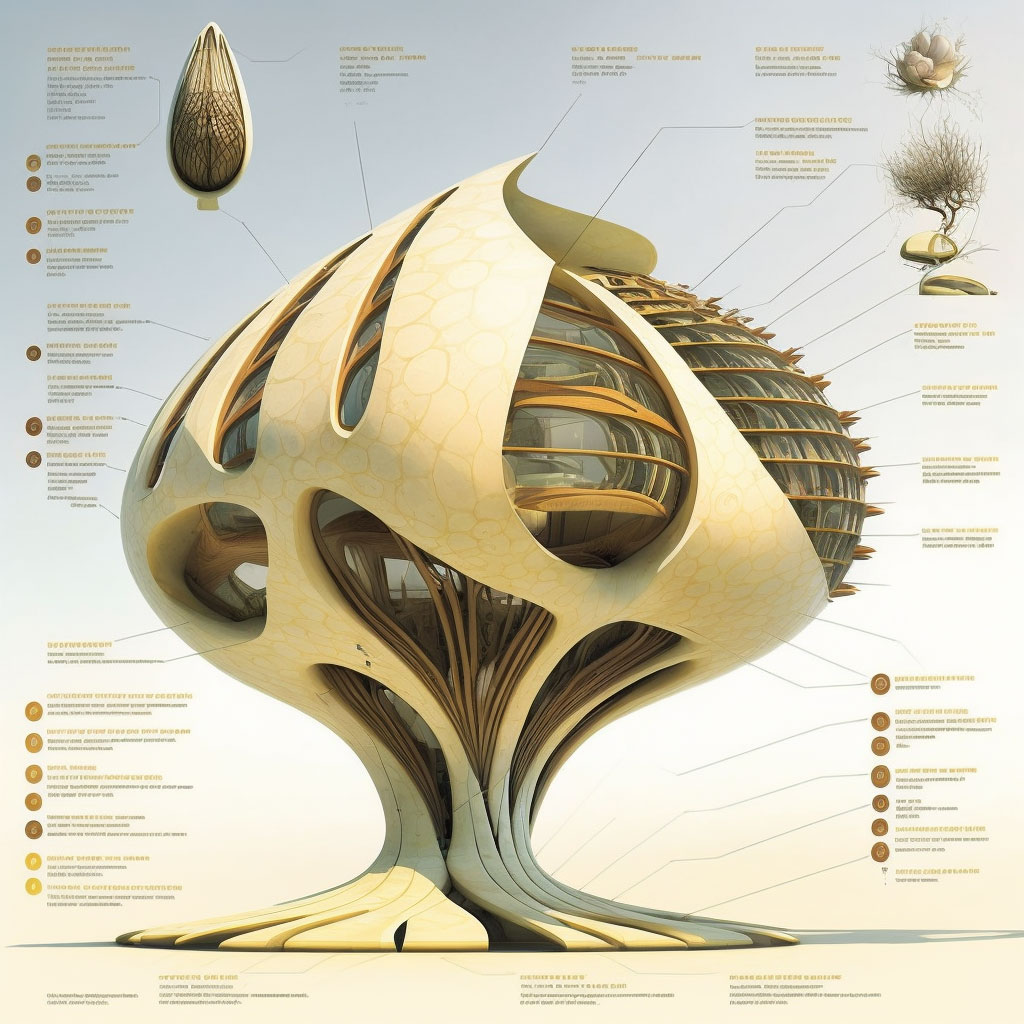
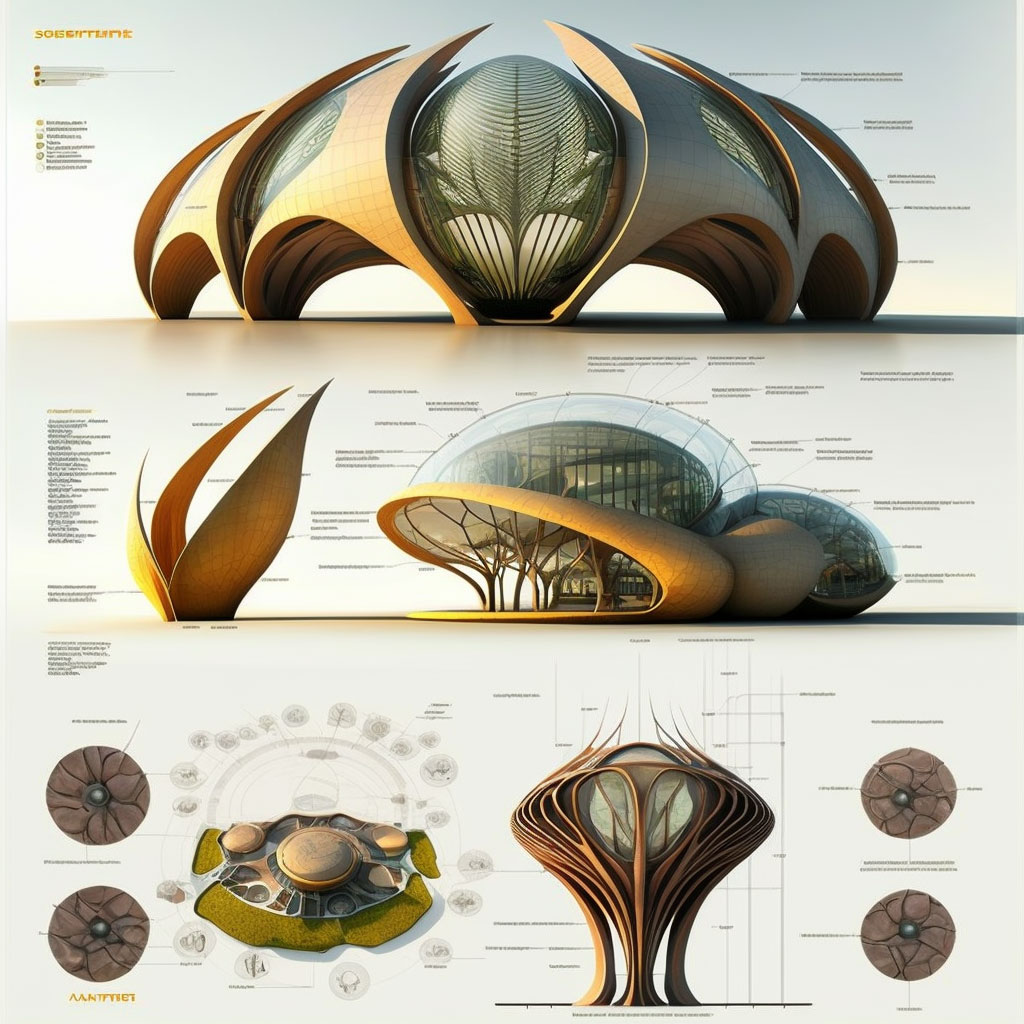
Users can also use keywords and phrases related to organic design and biomimicry, such as “curved,” “organic,” “biomimetic,” or “sustainable,” to help the AI understand the desired aesthetic of the design.
Finally, Mohamad Abdallah adjusts the various settings and parameters within the AI platform to fine-tune the generated image and achieve the desired results using the remix tool in Midjourney. For example, He may adjust the level of detail “intricate details”, the angle of the image “ low angle street view”, or the overall lighting “ golden hour, purple hour” to create a more realistic and visually appealing image.
Overall, using text-to-image prompts for organic design biomimicry-inspired architecture requires careful consideration of the input text and manipulation of the various settings and parameters within the AI platform to achieve the best possible results.
Image-to-Image transferring a sketch into other design variations
Image-to-image AI prompts to transfer a sketch into other design variations is a common technique that Mohamad Abdallah uses to quickly and easily explore different design options. This can be particularly useful for artists who are trying to refine a design concept or who want to experiment with different styles and techniques.
To use this technique, Mohamad creates a sketch as a design idea. he photographs or scans it and uploads it directly to Midjouney and retrieves a link that he uses in the prompt. Then Mohamad Abdallah uses image-to-image AI prompts to transform the sketch into a variety of different design variations or apply different color schemes or add additional details and elements to the sketch.
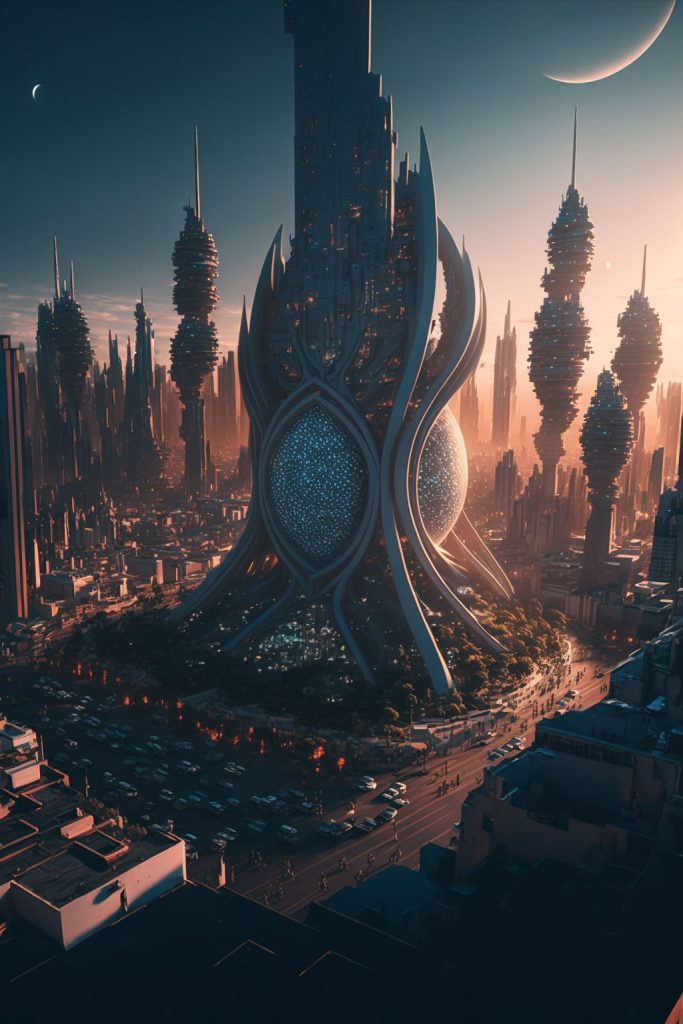
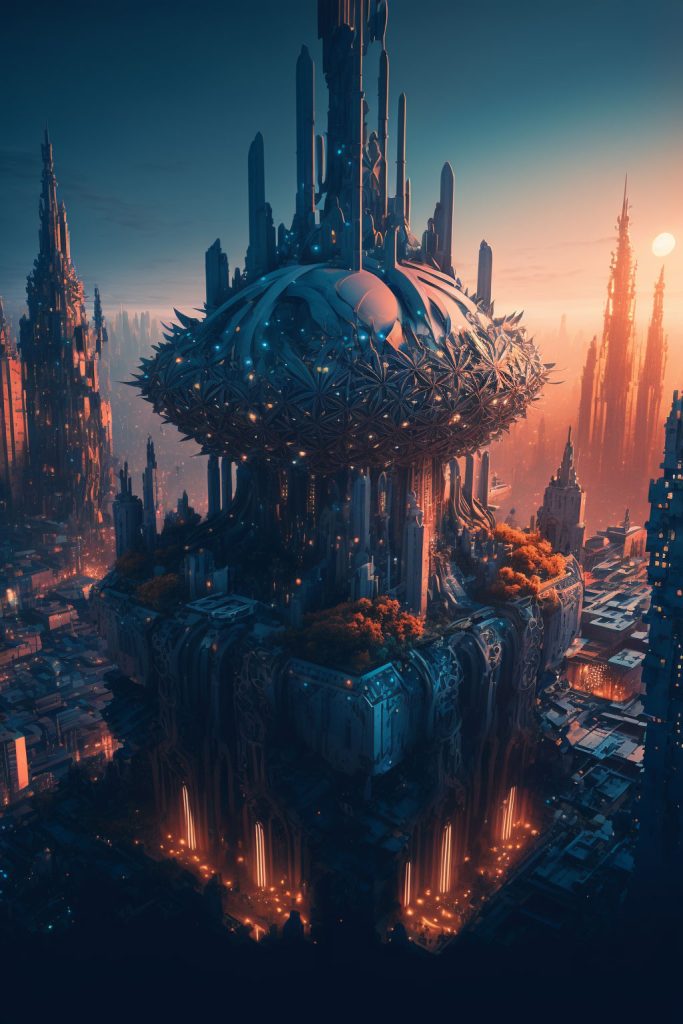
One of the key benefits of this approach is that it allows architects and designers to quickly and easily explore multiple design options without having to redraw the entire sketch each time. This can save a significant amount of time and effort, allowing them to focus on refining and perfecting their design rather than having to start from scratch each time they want to make a change.
Parenthetically, If you are curious to dive deeper into Midjourney, you can check the Midjourney Architecture 3.0 / Studio Tim Fu by PAACADEMY.
Experience / Advantage of using AI tools like Midjourney and Dalle2
There are a number of potential advantages that AI text-to-image generation tools could offer me in the architecture and design industry:
Speed: Text-to-image generation can be a quick and efficient way to generate images of potential designs, allowing me to quickly explore different ideas and concepts.
Visualization: Text-to-image generation can help me to better visualize my designs, making it easier to communicate my ideas and concepts to clients and other stakeholders.
Collaboration: Text-to-image generation can facilitate collaboration between me and other architects and designers, allowing us to easily share and discuss ideas with one another.
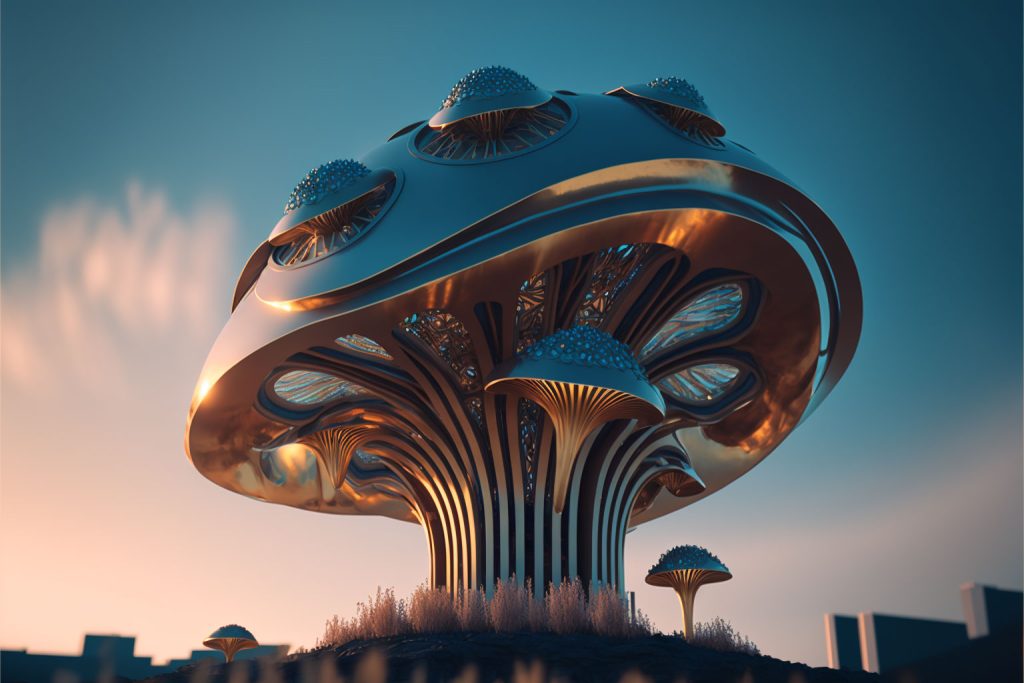

Customization: AI text-to-image generation tools can be customized to generate images that meet specific design criteria and requirements, making it easier to create designs that meet the needs and preferences of clients.
Cost-effectiveness: Using AI text-to-image generation tools potentially saved me time and money by streamlining the design process and reducing the need for physical prototypes or models.
Overall, AI text-to-image generation tools can be a valuable tools for architects and designers, helping them to create innovative and effective designs more quickly and efficiently.




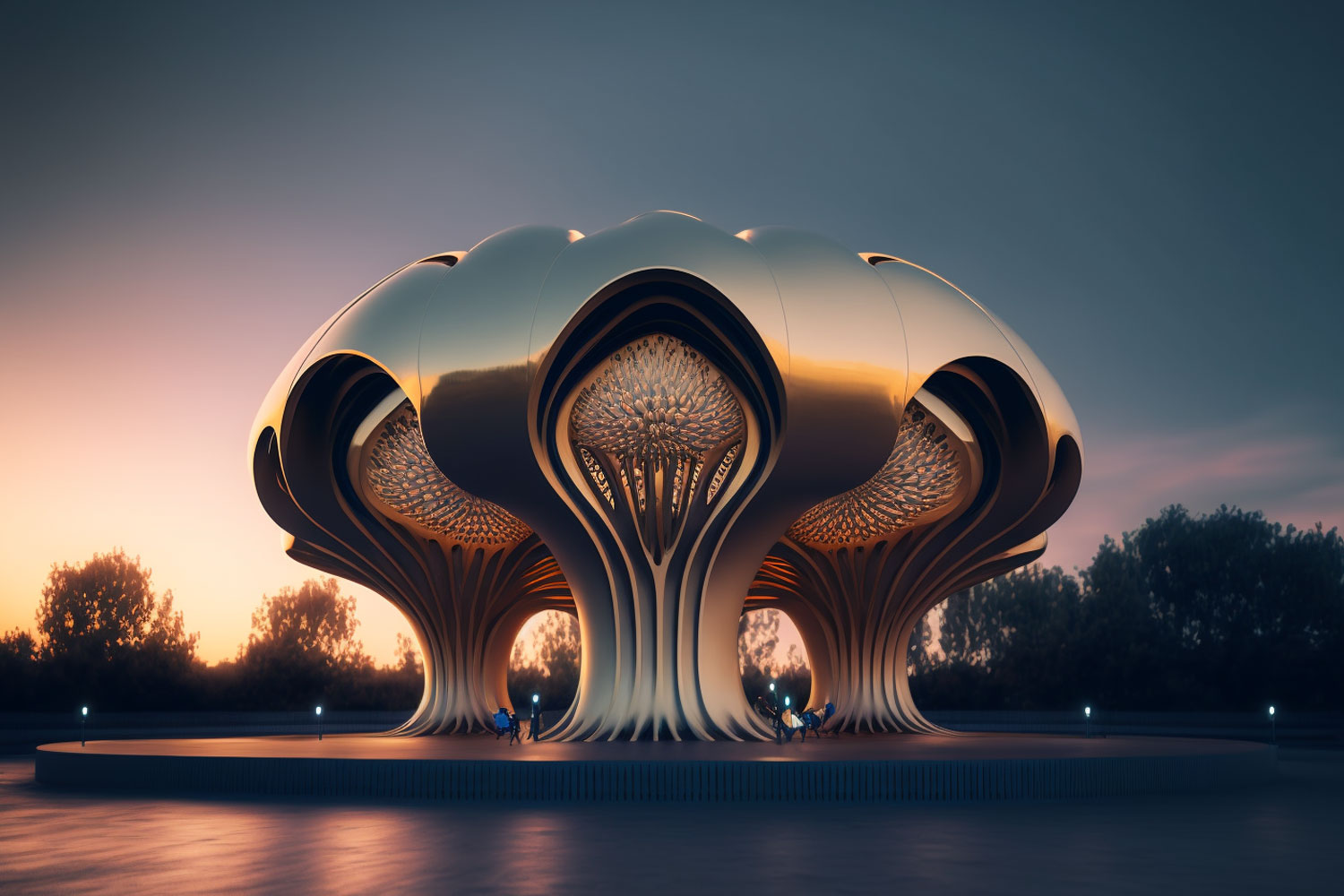
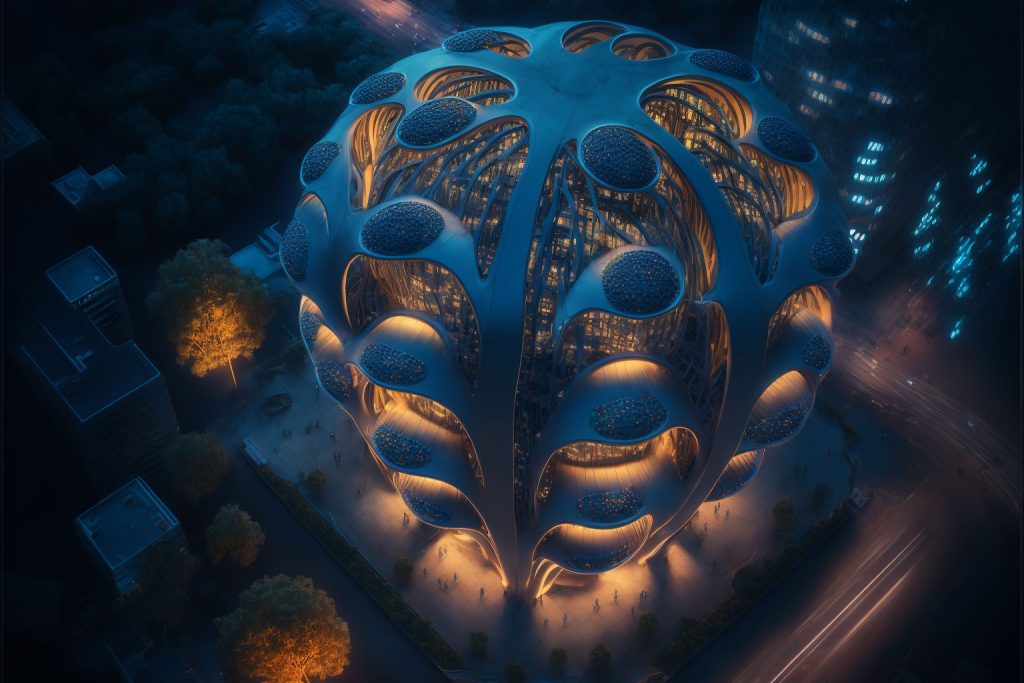
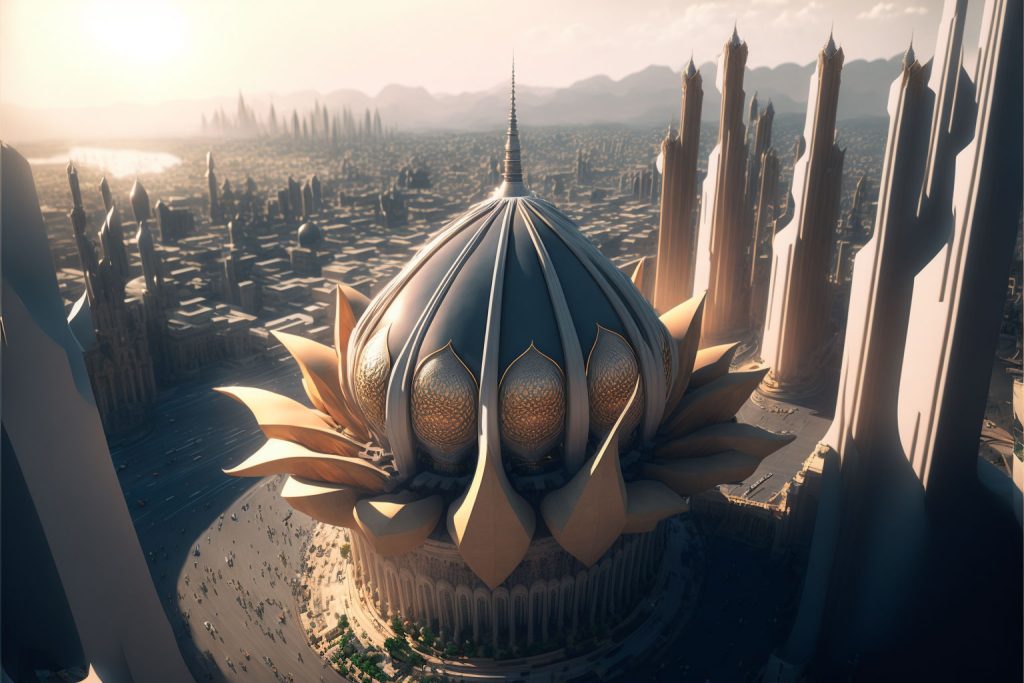
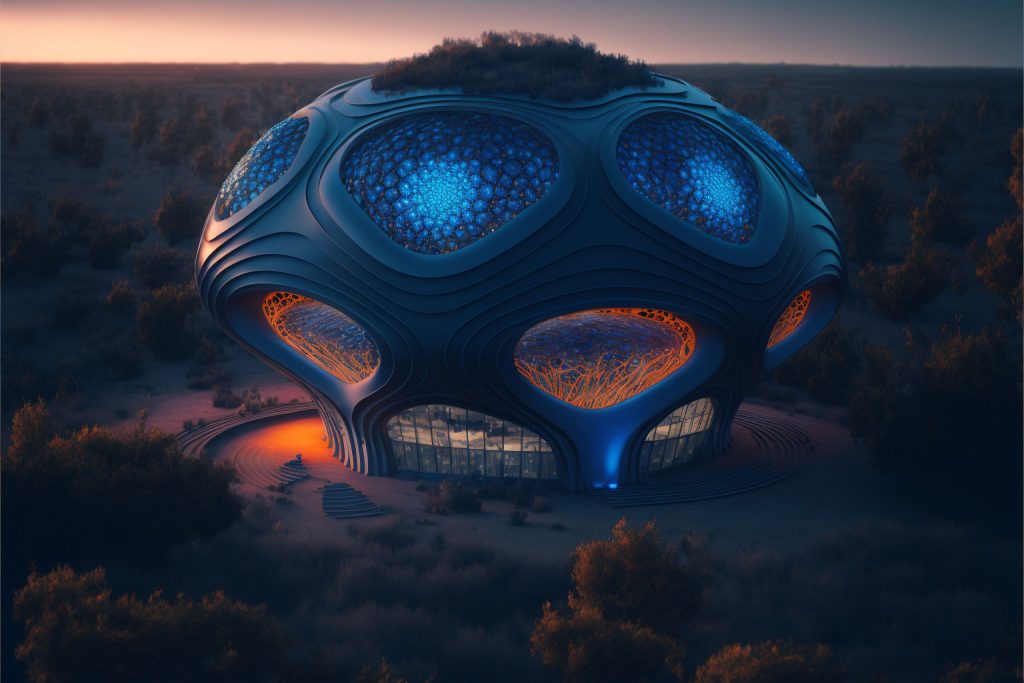
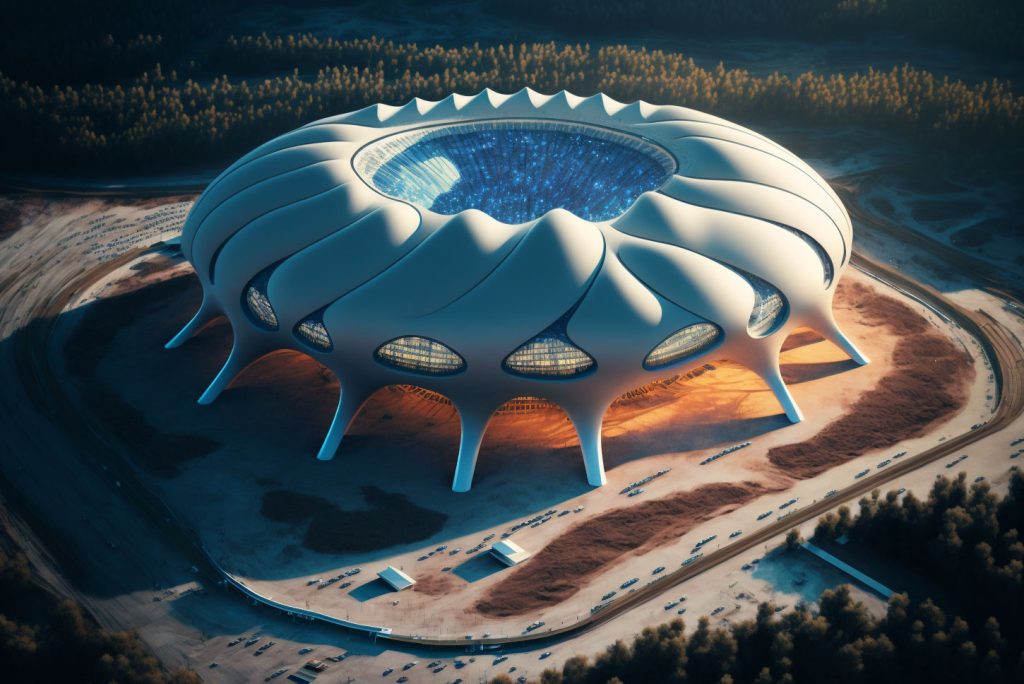
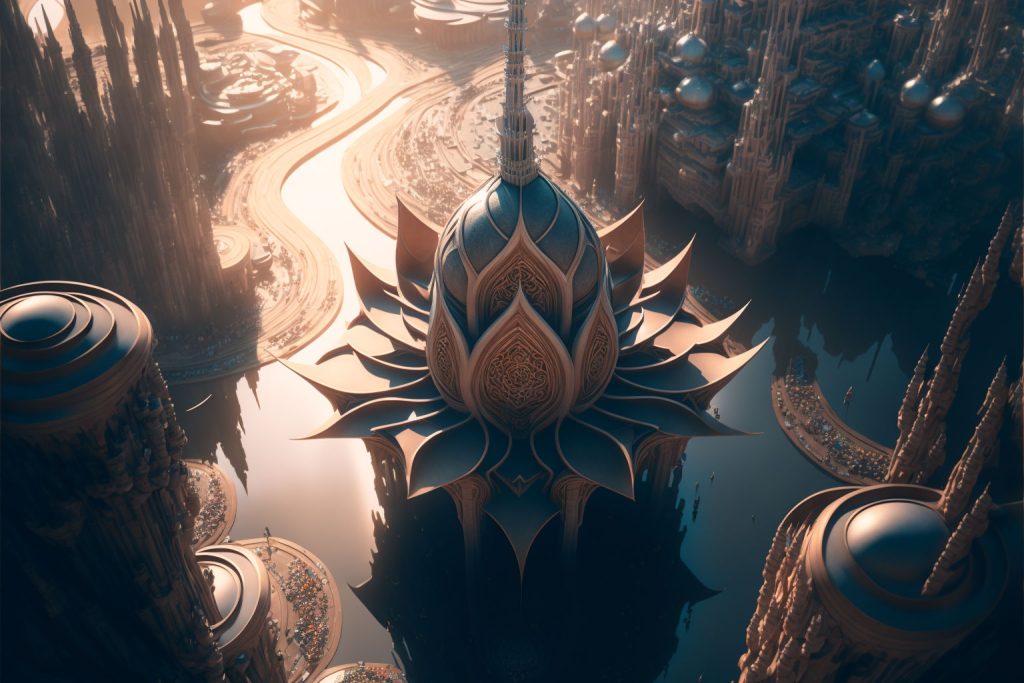
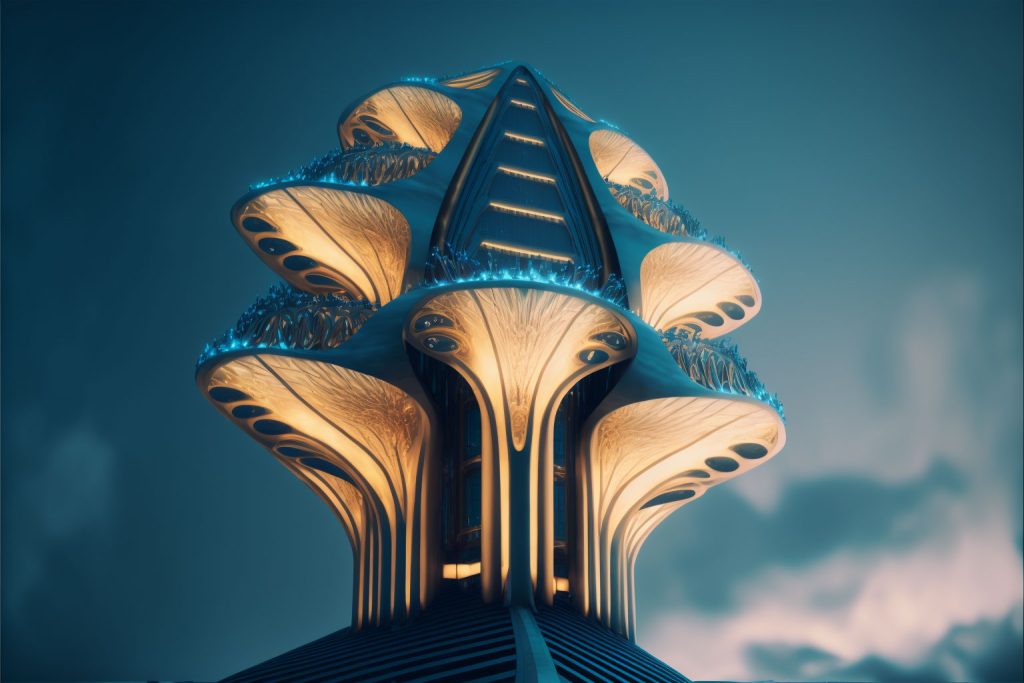
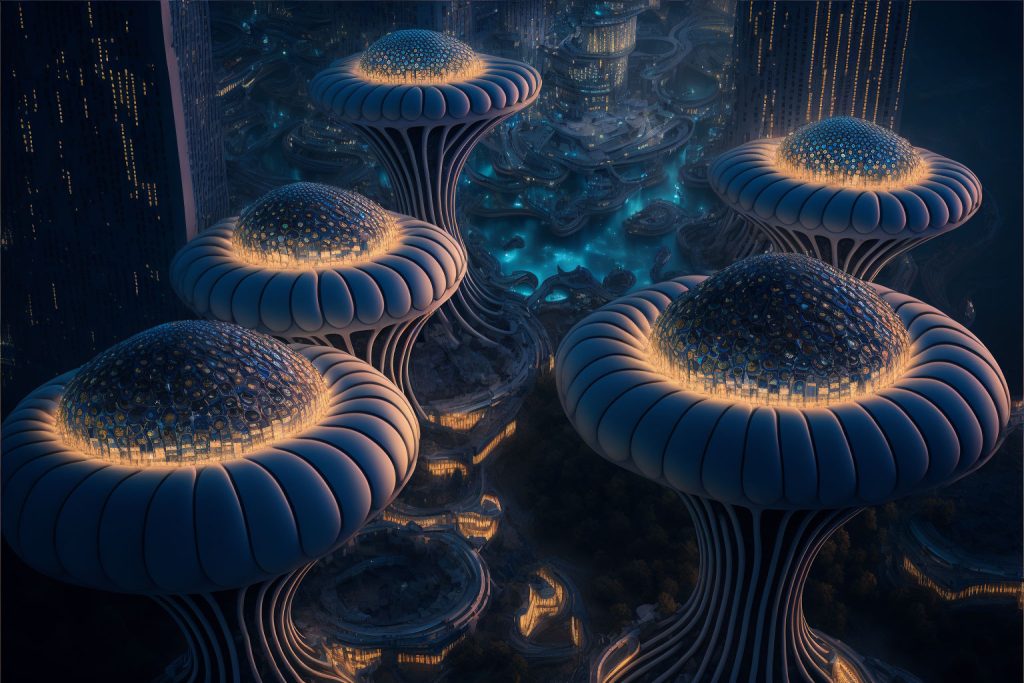














Leave a comment